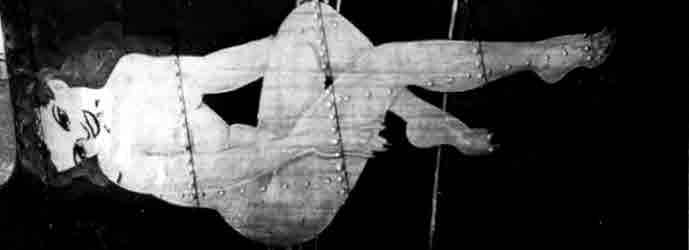IN CASE YOU WERE WONDERING
Happy Thanksgiving to everyone in the States and my best wishes to my modeling friends abroad.
So, like, I disclosed that I ripped out the nose I had so painstakingly built two years ago. (Yes, I'm afraid that's right, it has to be a couple of years ago).
So I went from this

To this

And yes, in between I did have a few "my God, what have I done!?" moments

The elusive goal remains, more or less, to accurately replicate the interior of a B-17 F in the nose. I know far more now about that than I did when I started. The major misconception I made, and that I think most modelers make, is that the F model looked just like a G model on the inside, but without a chin turret. And it ain't so.
Here is what I am now trying to replicate, going beyond the fact that the F model I am doing did not have exposed ribbing but rather fabric and insulation on the bulkheads.

Here is another general layout view from a Boeing drawing:

One difference right away I need to point out is that this aircraft will have the large drift meter, so there will be some configuration changes.
When the bulkheads are redone they will look something like the ones in the radio room.

You will recall that I achieve this effect by using 600 grit sandpaper that was sprayed with Tamiya 1000 gray primer covered with the spray of light olive drab. That's what the bulkheads in the nose will look like.
So, how to accomplish this?
The first time around I cut the side windows out separately and glued them in separately. Frankly, I wasn't especially happy with it, and this time I decided to make a virtue of necessity by going with the original large plastic pieces. As you can see from the below photo

I pinned this part to the fuselage with metal pins between the windows. I then decided that the best way to make it flush was to build up the surrounding bulkhead space so that it was flush with the window parts. This way I can cut out and apply the 600 grit sandpaper to an even surface around the windows; and the sandpaper itself will create the impression of a slight indentation between the bulkhead on the windows. I'm not going for complete accuracy here, just the illusion. No way am I going to put individual rivets around the window borders. I'm already mad enough doing this.
Let's now talk about the floor configuration and other major changes in the interior.
First, take a look at this old photo of the Memphis Belle bombardier floor that was taken by Karl many moons ago.

What we see right off is that the floor is split down the middle so that it is really cut into thirds, plywood on the left, an open hole with brackets for a sliding "bombardier chair" in the middle, and the last third also covered with plywood. This I will also replicate with the new floor. Karl has been kind enough to provide some details that I will disclose later.
One thing you can see now is that the nose and chin of Memphis Belle are far different from the G version.

For one, the plywood floor actually extends beyond the nose opening (I will do this) and the details below the base for the bomb sight are totally different from those on the G model. No large round holes punched in metal that fits up against the chin.

So, since this is so visible, I will replicate it.
Let's go back to seating arrangements for the bombardier.
As we know from the technical documentation posted by Karl, the F model bombardier seat was removed and the seat for the Navigator was removed. Close scrutiny of the below picture shows that on the bombardier floor the hole where the bombardier seat used to be is stuffed with seat cushions. I will do the same, using the Eduard seat covers with the "US Air Corps" stenciling on them.

I also pulled out and removed the Navigator seat (and floor) and made that area flush. It's clear that the Navigator could not have used his tools kneeling because of the height of the tabletop, so in this case I am going to make his "seat" an ammo box and then put seat cushions on top of that as with the bombardier. Should make for a nice, interesting display.
Finally, let's talk about changes needed for the bombardier equipment.
The basic bombardier control panel shown in the above picture will remain the same. But what I will not replicate is the bomb release equipment that is characteristic of G models, not F's. Check out that round thing forward of the bombardier panel in the below picture:

Unfortunately, that's not the way the bomb release equipment was configured in the F model.
Closer study of the B-17 F pilots' manual shows that it looked like this:

Frankly, a couple of years ago I would've shrunk in horror at the thought of replicating this. But, with my new mad "skillz" honed on this build, I'm going to give it a shot. (I say this half in jest, but the truth is that until this build I would've never dreamed of attempting some of the stuff I'm doing now).
As near as I can tell, the above equipment was immediately forward of the B-17 F bombardier panel pictured below.

Finally, if you look to the right rear of the below photo you will see some additional structures on the rear bulkhead and floor that I will replicate in the model.

I think that about sums it up. Since this rebuild represents a real challenge, I'm not as bored and tired of the project as I was a while back. I'm kind of looking forward to the opportunity to "get it right" within the limits of 1/48 scale. I may take some liberties with the actual configuration, of course, because "it's only a model."


































































